* (restored/updated)
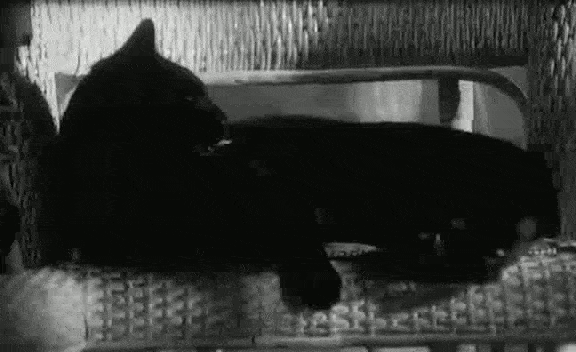
from Intense Vocalization: Marguerite Duras
by David Ehrenstein
‘The Marguerite Duras retrospective at the Film Society of Lincoln Center this month—18 years after the celebrated auteur’s death—presents an ideal opportunity to contemplate her place in the history of cinema. For while Hiroshima Mon Amour, the screenplay she wrote for Alain Resnais to direct, became an international success in 1960 (and remains a touchstone of “art cinema” to this day), the films she subsequently created on her own, beginning in 1969 with Destroy, She Said, have been alas, for the happy few. …
‘Destroy, She Said unfolds in the garden of a country hotel adjoining a forest that threatens the soigné guests (Michael Lonsdale, Henri Garcin, Nicole Hiss, Catherine Sellers) in some strange, difficult-to-define way comparable to to the “something” that so unsettles the upper-crust swells in Edward Albee’s A Delicate Balance. Low-key in tone, it does not seem like the sort of “art film” designed to break new ground. But it does so, and by explicit intention: Duras described her text as “a book that could either be read or acted or filmed or, I always add, simply thrown away.” The key word in this is “book,” as literature is always primary for Duras—even in the midst of the seemingly resolutely “cinematic.” It’s not by accident that Lonsdale—soon to emerge as a key Duras interpreter—plays a character called “Stein.” His name is derived from Duras’s novel The Ravishing of Lol V. Stein, the most crucial work of her entire oeuvre. …
‘Duras had no hope of replacing “real movies” with her conditionally tensed ones, but she went on making her sui generis works anyway—aided by a curious “real-life” character named Yann Andrea. A fan of India Song, Andrea entered Duras’s world in 1980 when he helped her through a “rest cure” designed to stem her alcoholism. His account of this, in a 1983 book entitled M.D., was met with some degree of critical interest. Duras’s own interest in Andrea quickly became an obsession. He appears with Bulle Ogier in Agatha et les lectures illimitées her 1981 reworking of elements that first appeared in her early biographical novel Un barrage contre le Pacifique (aka The Sea Wall), filmed by René Clément as This Angry Age in 1957. While Anthony Perkins and Sylvana Mangano play characters based on Duras and her brother in Clement’s version, their emotional conflict doesn’t go so far as incest, which is frankly discussed in Agatha. As nothing in the film is conventionally dramatized (Andrea and Ogier are seen wandering about the lobby of a hotel on the Normandy coast that also served as a setting for her India Song variation avant la lettre, La Femme du Gange, in 1974), no acting in the conventional sense was required. …
‘Curiously, Duras ended her filmmaking career with something resembling the conventional. Les Enfants began life as a 1970 book she wrote for children entitled Ah! Ernesto, later filmed by Jean-Marie Straub and Danièle Huillet in 1982 as En rachâchant (a rendition Duras disliked; also part of the retrospective’s shorts program). The story concerns a little boy who doesn’t want to go to school lest he learn things that he doesn’t already know. Les Enfants expands this slim tale to feature length with the novelty of having Ernesto played by an adult actor, Axel Bogousslavsky. It’s wryly amusing in a way quite unusual for Duras. More importantly, it’s shot in a more or less ordinary style, with actors playing actual characters and speaking words on screen in the usual manner.
‘That Duras would conclude her filmmaking career in this manner must be regarded in the context of a career that was devoted to textual elucidation. One suspects that the success of her novel The Lover in 1984—an overwhelming hit with both critics and the general public—put her off from filmmaking. Jean-Jacques Annaud’s 1992 adaptation of this tale, which was another derivation from the Un barrage contre le Pacifique cycle and which related how her family pimped her out to a wealthy Chinese man, was served up in the plush “high-class” erotic style of the Emmanuelle films. In what you might call anticipatory retaliation, Duras in 1991 wrote The North China Lover, a “remake” of The Lover adding details that the first version of Duras’s original novel didn’t include, all folded into an explicit critique of the film she suspected (with good reason) Annaud was putting together.’
____
Stills

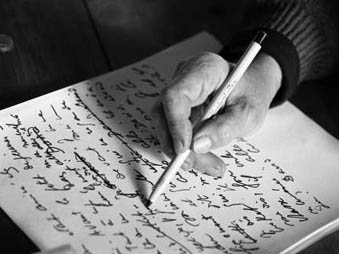

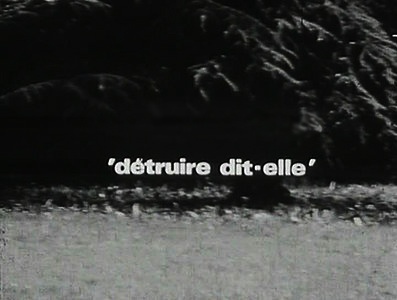
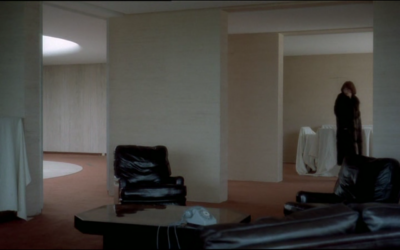

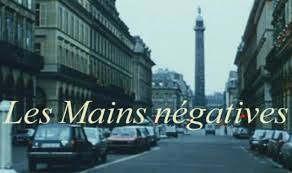
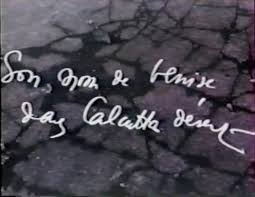



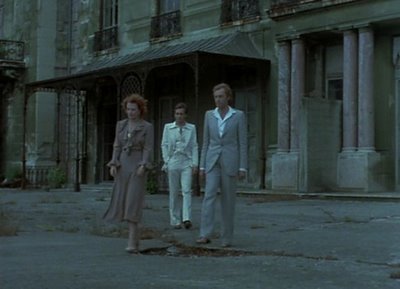
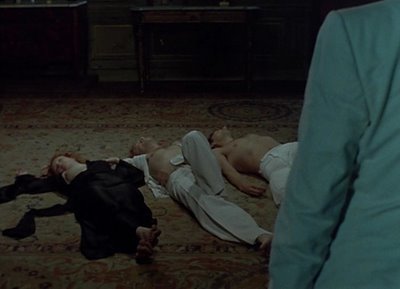












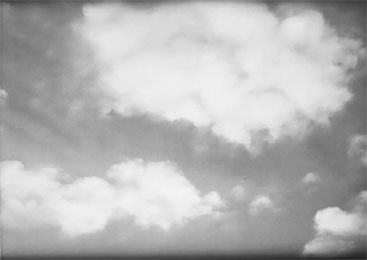



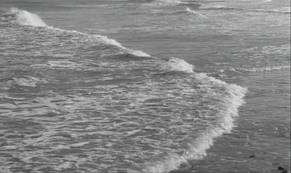
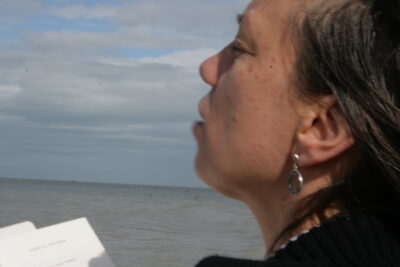
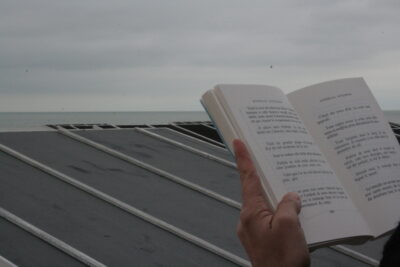



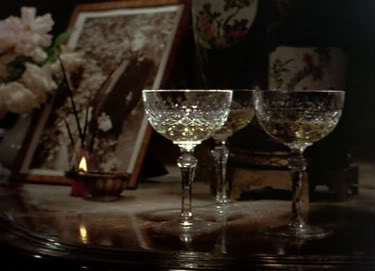
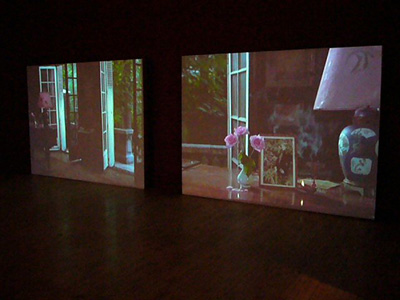
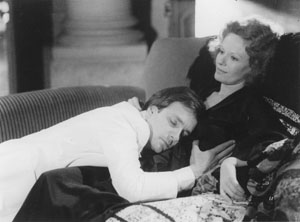
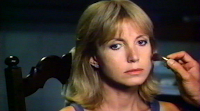

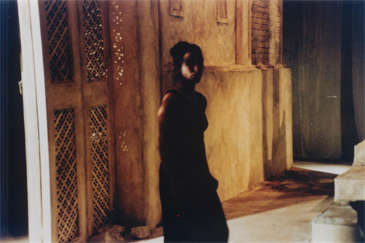


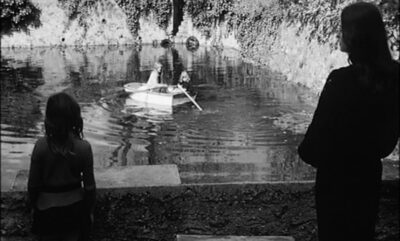
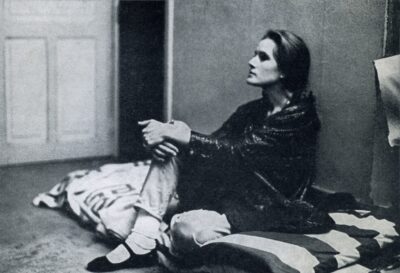





____
Further
Marguerite Duras @ IMDb
Association Marguerite Duras
Société Internationale Marguerite Duras
Les Écrits de Marguerite Duras
‘La petite cuisine de Marguerite’
‘In Love with Duras’ by Edmund White
‘The obsessions of Marguerite Duras’
‘The Art of Fugue: on Marguerite Duras’s Film Aesthetics’
Interview avec Marguerite Duras
‘Yann Andréa, la dernière énigme de Marguerite Duras’
‘Initiales M.D. (Marguerite Duras) (+ DVD)’
‘Marguerite Duras, l’éternel retour’
Lettre de Marguerite Duras à Alain Resnais
Film: ‘Marguerite, A Reflection of Herself’
‘NOUVEAU ROMAN CINEMA: MARGUERITE DURAS’
‘The Film Society to Fete Marguerite Duras with October Retrospective’
____
Extras
Marguerite Duras – “Écrire” (ARTE)
MARGUERITE DURAS À PROPOS DE L’AN 2000
Jean Luc Godard – Marguerite Duras
_______
L’interview imaginaire
from Versatile Mag
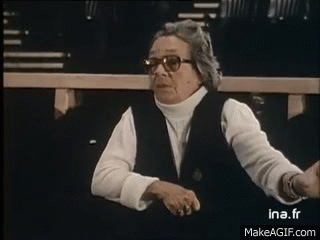
In 1996, you decided to stop everything, to no longer write a line. Do you have the impression that you have covered the issue, that you have nothing more to say?
Marguerite Duras: Sometimes we get caught up in the game. Just before 1996, I wrote a book called That’s it. There you have it, there are events in life, a bit like passion from which one cannot escape and I could have continued to write, I could have continued to make covers, to make modulations of my works, to infinity.
Few voices have been raised regarding your writings, do you regret this absence of controversy?
M. D.: Bullshit! Bullshit ! I have spent my life being the subject of controversy. I have always divided what they call “the literary world”, I have supposedly worn too many hats when the only one that suits me is that of a writer. Writer, but not literature. Writer.
In 2014… 2014, the Pléiade… And otherwise, I was always accused of self-indulgent gibberish, always judged to have a limited vocabulary, that we didn’t understand why Gallimard allowed one of my books to be released leaving so many mistakes in it grammar!
And my time in journalism, for Libération, that caused controversy. On the Petit Grégory affair, for example. So, controversies: all the time.
These criticisms mainly concern your stage and cinema adaptations which, on the other hand, have been undermined…
M. D.: So, there are two things. There are films that I made myself. Which I wrote and directed myself. These are films that we could now describe as art house films. This is my way of talking about cinematic writing, of saying that it was not necessarily narrative, that we could make cinema differently. Afterwards, I still collaborated with the cinema and it went very well: Hiroshima mon amour by Alain Resnais is a “classic”, all the same. Afterwards, there were certain adaptations that we are all aware of, like L’Amant which was adapted by Jean-Jacques Annaud. We didn’t agree, but he had obtained the rights… But that allowed me to make a book, and a good book, to take up L’Amant again after a few years and release a book called Lover of Northern China. A book in which I wrote my film, that is to say that the Lover of Northern China, is the written film of the Lover... which was much more successful than The Lover, his film.
Most of your stories are taken from your life, at the time of the glory of French colonialism. Is it a kind of nostalgia?
M. D.: Not a nostalgia at all, it’s a decor. There was the setting of Indochina, of what we called the Indochinese cycle, but afterwards, there were other settings, other cycles in my work. There is no question of nostalgia. Rather, I explain the flaws of colonialism. And otherwise the themes of my work, the themes that supposedly I take up, I modulate and I stretch, the relationship with the mother, the mother who is necessarily all powerful, but who is necessarily not up to the task. And then there is the romantic encounter, women, variations of women. I also talk a lot in my books about the unique, humid, warm seasons. I’m talking about social transgression. I often talk about colonialism, but not flashy colonialism: I often talk about white people, average little white people, and how they situated themselves in colonialism.
But I also talk a lot about the Shoah.
Unlike your writings which are resolutely turned towards the past, you seem to appreciate youth, at least in the choice of your companions, is this a way of looking towards the future?
M. D.: I don’t give a damn about the future. Well, it’s easy to say that when you’re published in La Pléiade, but I’m rather – and that’s why you’re talking to me about the age of my companions – someone who is in the present. It’s not about the future at all, it’s about being in the present and absorbing everything the present can contain.
What are you trying to forget?
M. D.: I write, so obviously when we write, we don’t forget, we summon. It’s pretentious to say that you are alone in front of your paper. Me, I summon and at the limit, one could say that I transcribe what I summoned, so I do not try to forget: I rather drink to face all those whom I summon, all those whom I do not can’t forget.
Who do you think could take up your torch?
M. D.: Great silence
A torch to illuminate what?
Many people call themselves my heirs, but I think there are plenty of people who believe they are writing, who believe they are writing books, when they are not writing anything.
You have to write as an absolute necessity, urgently: yes, why not?
But the torch, no. I am not a leader, contrary to what has been said, I did not belong to the Nouveau roman, I am just Marguerite Duras, M.D.
What would be the essential qualities?
M. D.: As I said before, write, write with a purpose, with generosity, not pretend to write, but write, tell yourself that what you write is essential.
For you, what is a good book?
M. D.: I don’t know.
If we were to invite you to dinner, what would be the ideal menu?
M. D.: Before talking about the substance, we will talk about the form.
It would be eating in Normandy, by the sea, in my hotel in Roches Noires. Or just down the street from me, in Paris, in Saint-Germain-des-Prés.
Peasant cuisine. I cook like a peasant myself. In Saint-Germain-des-Prés, it could be Les Prés aux Claires or Le Petit Saint-Benoît. I like peasant cuisine in Neauphle, in the house that I bought with the agent I won with Barrages contre le Pacifique… Me, there, I liked cooking, it took time. I did it when my friends were either sleeping or taking a walk. I had the whole afternoon, I cooked, I made shopping lists. Shopping lists that we even found published in La Pléiade. ‘Do not make fun of it.
There you have it, cuisine that cooks a lot, that simmers, as they say. If there is no lemon in the kitchen, there is nothing.
And then there is the Vietnamese omelette. The Vietnamese omelette, with peasant cuisine, is what I like the most.
My son published a cookbook after my death: La cuisine de Marguerite Duras. Well, Yann Andréa had it banned. It’s true that it wasn’t very literary.
With François Mitterrand, we talked a lot about cooking, even if I never saw him eat ortolans, hidden under his napkin.
During this meal, what would be the topics of discussion to avoid?
M. D.: None. None, except perhaps literature or literary criticism, but otherwise, we need to talk. We have to mix ideas.
What background music do you want to hear?
M. D.: Moderato Cantabile. Moderate and singing. Music always linked to passion. I especially like these meals – and this is perhaps what could be interesting in these meals – I like music when it disrupts the narrative development, when you have to stop because you are so intrigued or captivated by the music and we have to pick up the story. That is what is interesting. I like ditties: When the lilac blooms, My love… There you go, all these things from before the war, or even more classic things like the Art of the Fugue by Johann Sebastian Bach which I have a lot of listened to when my son was taking piano lessons. You are aware. Heard those stories where little boys take piano lessons while mothers fall in love.
__________________
17 of Marguerite Duras’ 22 films
________
La musica (1967)
‘Marguerite Duras’ La Musica, which she adapted from her own short two-character play, is about a husband and wife who meet three years after their formal separation, when they return to the provincial town where they once lived to pick up their divorce decree. In the film’s longest sequence, which I suspect is pretty much the total of the play, He (Robert Hossein) and She (Delphine Seyrig) come together in the lobby of their hotel, at first acting like anxious, rueful ghosts. They circle each other in carefully choreographed movements; alternately each literally frames the other by his own person and by his mirror image. (Miss Duras loves to see things in and through glass—mirrors, windshields, windows). The revelations, though obliquely made, are quite specific. She was unfaithful. He once planned to murder her, She, unknown to him, once tried to commit suicide. La Musica is intellectually chic moviemaking of the sort that is quite entertaining while it is going on but practically ceases to exist, even as a memory, when it’s over. Hossein and Miss Seyrig read their lines with style and look marvelously unhappy, she, especially, in blond bob that evokes the 1930’s and the image of Lilyan Tashman.’ — New York Times
Trailer
Excerpt
__________________
Destroy She Said (Détruire dit-elle, 1969)
‘In a secluded hotel circumscribed by a dense forest Max and Alissa Thor meet Stein and Elisabeth. Max, a professor of future history and an aspiring author, is immediately attracted to the brooding wife of industrialist Bernard Alione, Elisabeth, who is recovering from a miscarriage. Stein, a German Jew and potential writer, is infatuated by Alissa, Max’s young wife and former student. During their sojourn the guests’ identities gradually meld. While playing cards, for example, each guest anticipates the others’ observations. Although her friends remain at the resort, the insecure Elisabeth leaves upon the arrival of her worldly husband. Destroy, She Said is a madhouse in its narrative and dialogue with contradictions within sentences. A triumph performance from Catherine Sellers sells the crazy with wonderful panics and confusion wayward bursts.’ — collaged
Excerpt
Excerpt
the entire film
________________
Yellow the Sun (1971)
‘The whole film takes place in a single room where representatives of the two political forces and their enemy “the Jew” are gathered. A female character establishes the dialogue between these individuals and comments on the ideology of each, and then everyone seems to rally to a common idea.’ — MUBI
Excerpt
________________
Nathalie Granger (1972)
‘Nathalie Granger is aesthetico-philosophical opus-film. The strictest logic of its visual images step by step moves us, the viewers, to the feeling that we, while observing the still and harmonious life in a quiet and prosperous household, never expected to get – the feeling of the incompatibility between traditional (over-worldly) spirituality (as it exists and flowers in religious and/or ideological beliefs) and… children’s psychological needs. It is the one of the miracles of this film that the concept of traditional (above-worldly) spirituality is not defined but is impersonated by two profoundly intelligent actresses: Jeanne Moreau and Lucia Bose. They both incarnate over-worldliness with miraculous naturalness of complete immanency. They live eternity as if it is possible to breath when you are inside it. To watch Nathalie Granger is challenging as well as a stimulating and rewarding experience for all those who in their life and thinking don’t follow the authoritarian clichés and seductive songs of entertaining ads but are prone to try to make up their own minds about life and the world.’ — actingoutpolitics.com
the entire film
________________
Woman of the Ganges (1974)
‘A man returns to the place he once lived a passionate love affair with a woman who is now dead. So powerful are the emotions that seize him that he imagines she is still alive, and begins to live as if this were the case…’ — Letterboxd
the entire film
________________
India Song (1975)
‘Marguerite Duras creates a sensual, yet abstract and enigmatic exposition on longing, isolation, haunted memory, and obsolescence in India Song. Duras integrates highly stylized, yet integrally personal (and relevant) impressionistic images of her youth in then-French Indochina and the radical nouveau roman structure that has come to define the novelist turned filmmaker’s mid-century avant-garde literature within the classical framework of tableaux imagery that redefines the syntax of traditional (and particularly cinematic) narrative. From the opening sequence of ambiguous, (but implicitly colonial) foreign landscapes, Duras establishes the dissociation between the visual and the aural through incongruous and aesthetically formalized tableaux juxtapositions that, in turn, reflect the film’s overarching themes of alienation and estrangement: exclusive use of non-diegetic sound to serve as a surrogate contextual (anti) narrative; visually distanced, non-confronting dialogue through mirrored angles (a technique similarly implemented in Alain Resnais’s Last Year at Marienbad); pervasive musicality through a slow rhythm waltz that conveys the film’s paradoxical sense of displacement and stasis through its languid pacing, recursiveness, and melancholic tone; repeated references to leprosy that ingeniously evoke an implicit association between isolation (through disease quarantining) and colonies (lepers and imperialism). Inextricably bound in the performance of the empty social rituals of their class, these aimless, privileged colonialists embody the adrift and inutile fleeting vestiges of a crumbling empire, reduced to the imperceptible glow of an anecdotal setting sun against an inherently sovereignless – and unconquerable – eternal landscape.’ — Strictly Film School
Excerpt
Excerpt
Excerpt
_______________
Son nom de Venise dans Calcutta désert (1976)
‘The film is a sequel to her 1975 film India Song and features Delphine Seyrig reprising her role as Anne-Marie Stretter. The film premiered at the 1976 Cannes Film Festival in Directors’ Fortnight. Duras demonstrates that the disease and suffering of the Indians symbolically infects the Europeans as well. Thus, she asserts: One of the external signs of the fissuring of the seemingly watertight compartmentalized colonial society is the deep sense of malaise and maladjustment which is wearing out its white inhabitants. In spite of the vast paraphernalia of protective artifices, the Europeans find their presence in the colony quite intolerable.’ — collaged
Excerpt
Compression “Son nom de Venise dans Calcutta désert” (2016) de Gérard Courant
_________________
Entire Days Among the Trees (1976)
‘Des journées entières dans les arbres is a 1976 French film directed by Marguerite Duras, based on her novel. Prior to directing a film version of the novel, Duras had already modified it into a stageplay that had enjoyed a theatrical run.’ — found
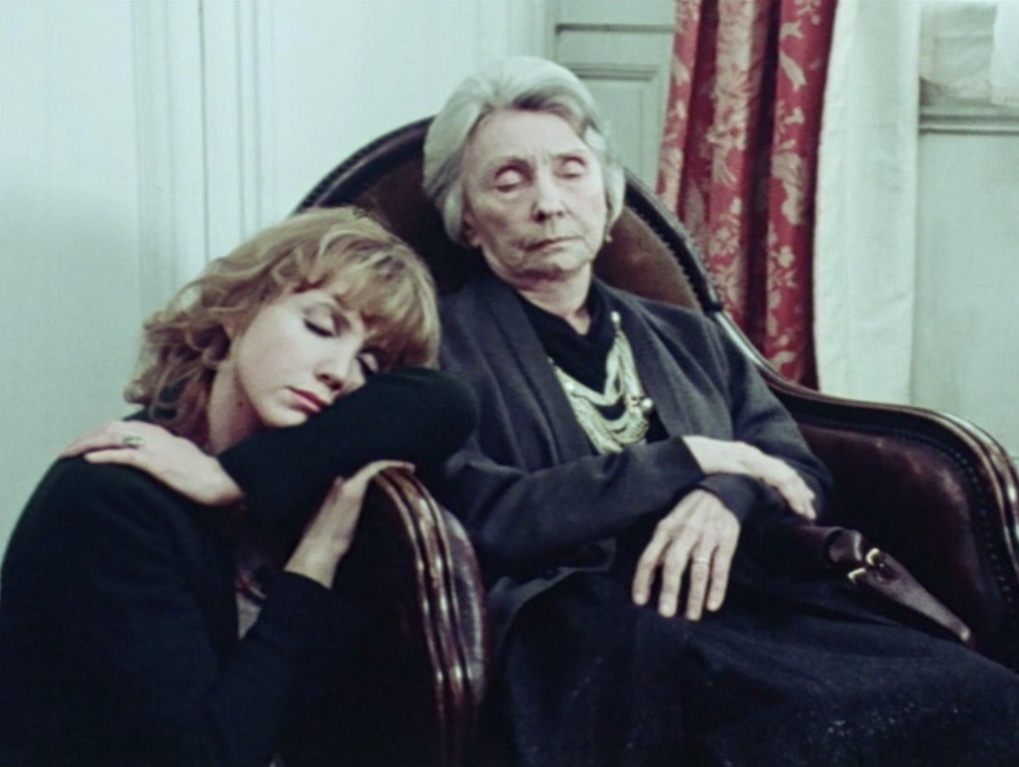
______________
The Lorry (1977)
‘The script itself tells about an encounter between a blank-slate of a woman hitchhiker, and a communist truck driver. As the reading progresses, Duras comments bitterly about the failed ideals of communism and the glorious revolution that will probably never happen.’ — MUBI
Excerpt
Excerpt
________________
Baxter, Vera Baxter (1977)
‘Images of the seaside again at the beginning of the film, when Carlos d’Alessio’s music starts playing. This song will continue to play the entire 90 minutes of the film. It’s maddening! It’s exhilarating. Especially given the contrast between the catchy nature of the relentless music and the lethargy of the main character, a woman deciding whether to rent a very expensive villa with her cheating husband’s money. It’s supposedly the neighbours who are playing the music. But we never see them. A troubled testament to the eternity of love. Whatever happens, however many times we end affairs, we leave each other, we cheat, we lie, we abuse, love never ends. Part of us can never stop loving. Even if the rest of us is ill equipped to deal with it. And it is ultimately this discrepancy that causes us to hurt each other. Not the lack of love. But its eternal presence.’ — Tale of Tales
Excerpt
Excerpt
the entire film
________________
Les mains négatives (1978)
‘The images of the film are Paris at dusk. A city far too great to comprehend on any level other than the superficial, a city that leaves one reeling in Stendhalism. It’s a blank Paris, before the stories of the day play out, it mirrors the “mains negatives” of the title, presence by absence, the hand-print revealed by the blank left when the area round it is covered in paint. The beauty of the city is revealed by the traces that people have left behind, murals, avenues of trees, monuments. Marguerite spoke of these images as images passe-partout, images that allow the narration to infuse them with meaning. It’s good to watch the film without sound first to understand how fully the perception of the images is informed by the narration. The parallel images you don’t see are of pre-historic petroglyphs, stencilled scuplted hand-prints which Duras describes as being in a cave by the sea. These were, in her interpretation, people simply recording their existence, in front of the immutability of the sea and the granite. What they have in common is that all the hands look the same, there’s an equality to each person’s existence implied.’ — oOgiandujaOo, IMDb
the entire film
___________
Cesarée (1979)
‘Made up of stills of the Tuileries gardens and its statues by Maillol, Césarée is stamped with the memory of Berenice, queen of the Jews, and of her city of which nothing remains but the name, abandoned following her repudiation. There is this same confusion of time periods and resurgence of narratives in Les Mains négatives. Its dolly shots trace a slow advance through Paris, which is deepened by the reference to the drawings of hands found in many caves dating from the Magdalenian age. Thus comes to a head an ode to humanity, and to all its excluded ones, that daylight, only just risen over the city, has not yet forced into extinction. Its murmur resounds for a long time: “Everything is being crushed, I love you farther than you. I would love anyone hearing me shout that I love you.”‘ — Frac Lorraine
the entire film
________________
Le Navire Night (1979)
‘A huge let-down to audiences at the time, Marguerite Duras’ follow-up to her lush and flamboyant India Song is a very different film indeed. Telling the story of two tragic lovers who never meet (the girl is dying of leukemia and daren’t risk face-to-face contact) Duras sets out to communicate this ‘faceless’ relationship to her audience by – and you really won’t believe this unless you see it – barely even photographing the glamorous trio of actors she has hired to star. So if your notion of sheer cinematic bliss is gazing raptly at Mathieu Carriere or Dominique Sanda (OK, I admit it, mine is) then be warned that Le Navire Night may give you a nasty shock. Long motionless takes of the three actors having their make-up put on or wandering – barely visible – round shadowy rooms. For most of the film, the camera pans along deserted Parisian boulevards, or pores over a luscious red dress hanging on a wall. At the end, Duras announces in voiceover that “the story was never shot.” True, on a purely literal level. Yet the sense of frustrated longing that sustains both non-lovers through their passionate non-affair…if we don’t experience that through the methods Duras uses here, why not? Are we incapable of feeling unless we are prompted by the prescribed visual image? Or are we (as Susan Sontag feared) so saturated by images that we can no longer feel at all? To try and put it more simply, why is Marguerite Duras’ way of telling this story any less valid than the conventional techniques that we, as a film audience, expect and demand? Our answer to that question says little about Duras and her film, and everything about us. Why do we feel the need to reduce an emotional tragedy to a visual image? Is it morally acceptable for a film to do that? At once a negation of cinema as it is, and a reaffirmation of what cinema might be, Le Navire Night is a film to be watched with heart and mind and senses wide open. Or not watched at all.’ — David Melville
Excerpt
Apropos LE NAVIRE NIGHT DE Marguerite DURAS
________________
Aurélia Steiner (Vancouver & Melbourne) (1979)
‘As is the case with other experimental shorts by Marguerite Duras, the images, although beautiful are almost mood-setters, the main images are evoked in the mind of the viewer by the words of Aurelia Steiner, sometimes, though by no means always, synchronising with the images. For example the shot traverses Notre Dame de Paris, which is actually a white building, but here the stone is yellowed by the late-evening sun, and Aurelia talks about voices (“they’re speaking”) telling her of palaces by streams with thickets of nettles and brambles between them, of island temples, and for a moment Notre Dame is on the Ganges. This reminded me the ideas of writer Italo Calvino and his book The Castle Of Crossed Destinies, in which stories are almost exclusively narrated by the placing of Tarot cards in sequences, the evocative symbols (forest, castle, well, mountain, gibbet) being generators of images that are particular to each reader, Calvino accepting how very much of the story rests in just these small kernels. Aurelia Steiner then, will be a unique experience for whoever watches it. In this way it’s almost anti-cinematic, the viewer isn’t forced to see the fixed images that make up the fantasies of standard commercial cinema. In a special edition of Cahiers du Cinema Duras wrote that she was aiming for an ideal, which was of the “image passe-partout”, to use shots that were neither beautiful nor ugly, which would be exchangeable between a series of texts, images that would take their direction from the narration. If she was aiming for images without beauty she would have been better off not using cinematographer Pierre Lhomme, who shot Army of Shadows, and worked with James Ivory and Ismail Merchant. The collaborators do however create a sense of vacuum with the images on-screen, a cavern that Aurelia’s words fill.’ — IMDb
the entire film
_________________
Agatha et les lectures illimitées (1981)
‘This film was recorded in Trouville-sur-Mer, in the lobby of the building where Duras lived. She reads the female part of the text and her much younger lover, Yann Andréa, reads the male part. The dry way of saying the words that express such passionate feelings has inspired much of the tone of Bientôt l’été. Not to mention the views of the sea, and the atmosphere of an abandoned resort town.’ — Tale of Tales
the entire film
_______________
L’homme atlantique (1981)
‘An autonomy of the soundtrack, giving back to writing and to the voice of the writer its importance. A black screen with few images from rushes of the previous “Agathe”.’ — MUBI
the entire film
_______________
Les enfants (1985)
‘7 year-old boy Ernesto intrigues people around him for several reasons. Despite such a young age, he looks like a man on his 40’s and also seems a little more intelligent than any of his peers – and the latter fact is what causes him to quit school, refusing to attend it because he doesn’t want to learn the things he does not know. His family is very supportive of his actions, even though they don’t have any clue of what’s to become of him; at the same time the school headmaster and a journalist are concerned about Ernesto’s real motivations for leaving school.’ — IMDb
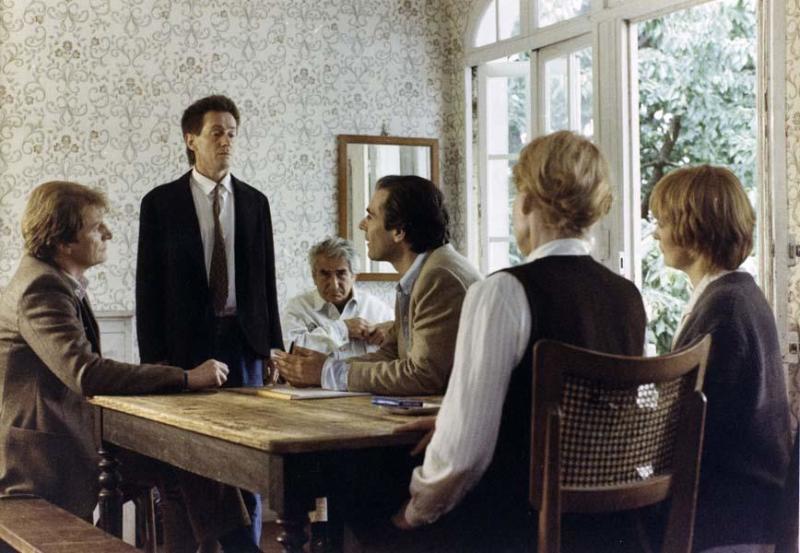
*
p.s. Hey. ** Misanthrope, Oh, it is interesting. Very. Yeah, sad about Kyle Ross. Such a lively porn star. I’m not a crier either, although sometimes a movie scene will jerk the beginnings of a tear out of me. Well, yes, send me a pic. I haven’t pictured him at all. ** Steve, Oh, is she Djibril Diop Mambety’s niece? I didn’t know that. That’s very interesting. Rain took a break from Paris yesterday, and possibly today, by the looks of it, although I’ll be in the sound studio all day, so it doesn’t matter either way, I suppose. ** _Black_Acrylic, Thanks, and … yay! As soon as I have to stop listening to our film in relentless, repetitive detail, ideally tonight, I’ll be so all over heavenly PT. Everyone, Have you yet heard the glory of the coming of Ben ‘_Black_Acrylic’ Robinson’s Play Therapy v2.0, the most assured sonic joy du jour? In the maestro’s words: ‘Here to bring you a very European brand of Futurism, coming to you via a not-quite-forgotten Scotland and stopping here at Leeds on the way round.’ Take a break from this ugly world and listen up here. Seriously. Thank you, thank you, Ben! ** Darby 🎲, Hi. Oh, I don’t know why then. My brain just went there. Mr. Crash is the only other Darby I can think of. Imaginary Paris recs for your ideal journey? Uh, The Museum of Hunting and Nature, pizza at Sette, long walk from the Louvre to the Arc de Triomphe through the Tuileries, pop into the sound studio where I’m working in the Marais to say hi, Ethiopian food at Addis Ababa, … I could go on. It’s not raining, so it’s good timing. Cool about the T shot! Are there, like, side effects or anything? ** Justin, Hi, Justin. It’s real good: the book. I haven’t seen the new Kore-Eda yet but I really want to. It’s strange: everywhere else the film is titled ‘Monster’, but here it’s been retitled ‘L’Innocence’, which is so boring. Yeah, we finish all the main film stuff in a few days, and then we’ll have to do the special effects work in the next couple of weeks, which should only take 2 or 3 days. It’s not sad. I’m desperate for people to finally see it, even though, like all films that aren’t Hollywood deals, it’ll have to roll out very gradually through festivals for a while. Grr. Lovely week’s kickstart to you. ** Uday, You’re an unmarked human body too. Well, yeah, not counting scars. I don’t have that many scars other than the axe wound/dent in the top of my head from childhood, which my remaining hair thankfully keeps out of view. One time back in the Rave days, I was zonked on Ecstasy at a rave, and a friend of mine wrote ‘DOSE ME’ on my forehead with a sharpie, and I didn’t even realise that was why people were looking at me strangely until two days later. What’s on your immediate agenda? ** Okay. I decided to restore and expand the blog’s old post dedicated the filmmaking side of the great Marguerite Duras for y’all today, and I hope y’all will agree that was a decent decision. See y’all tomorrow.
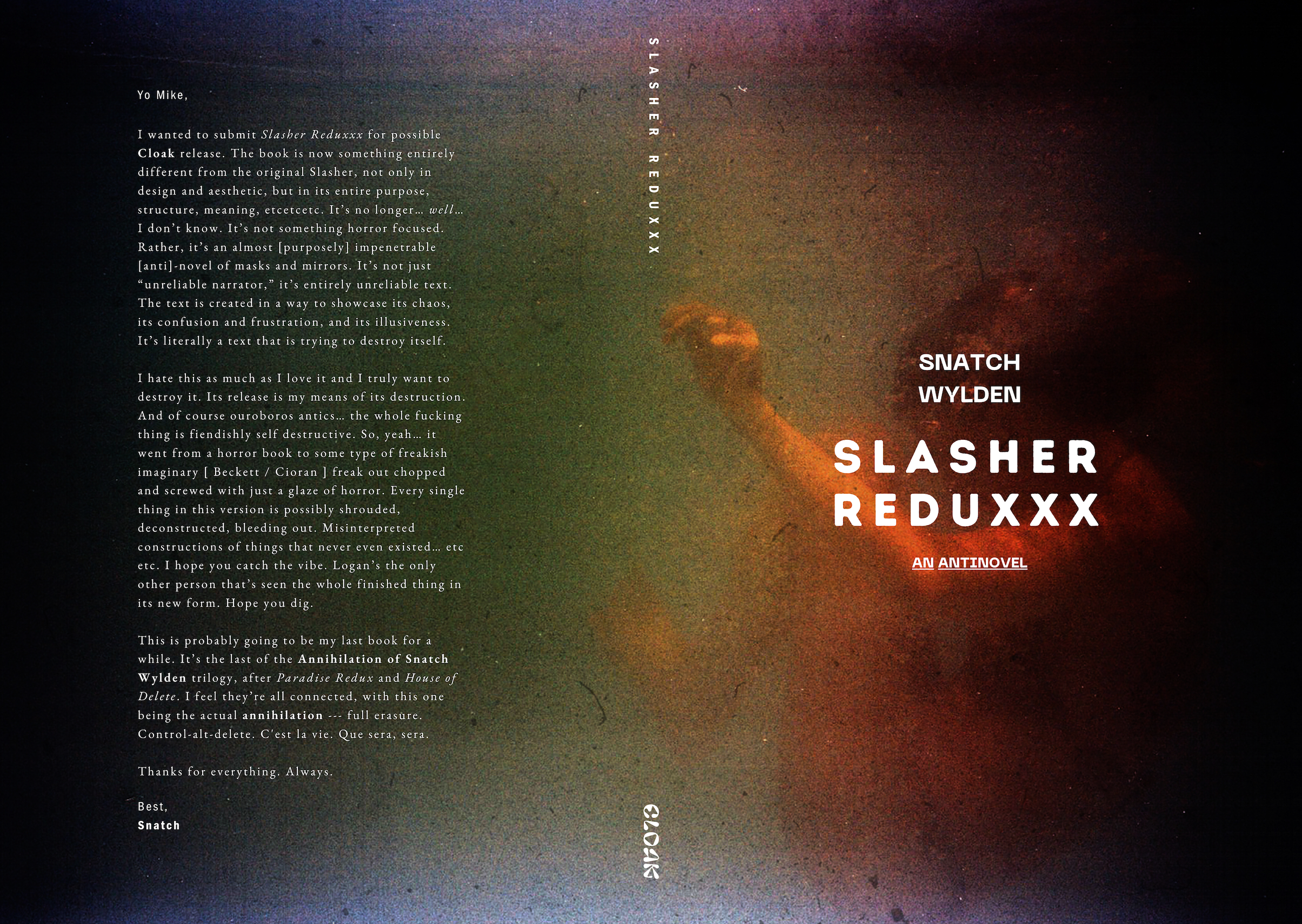
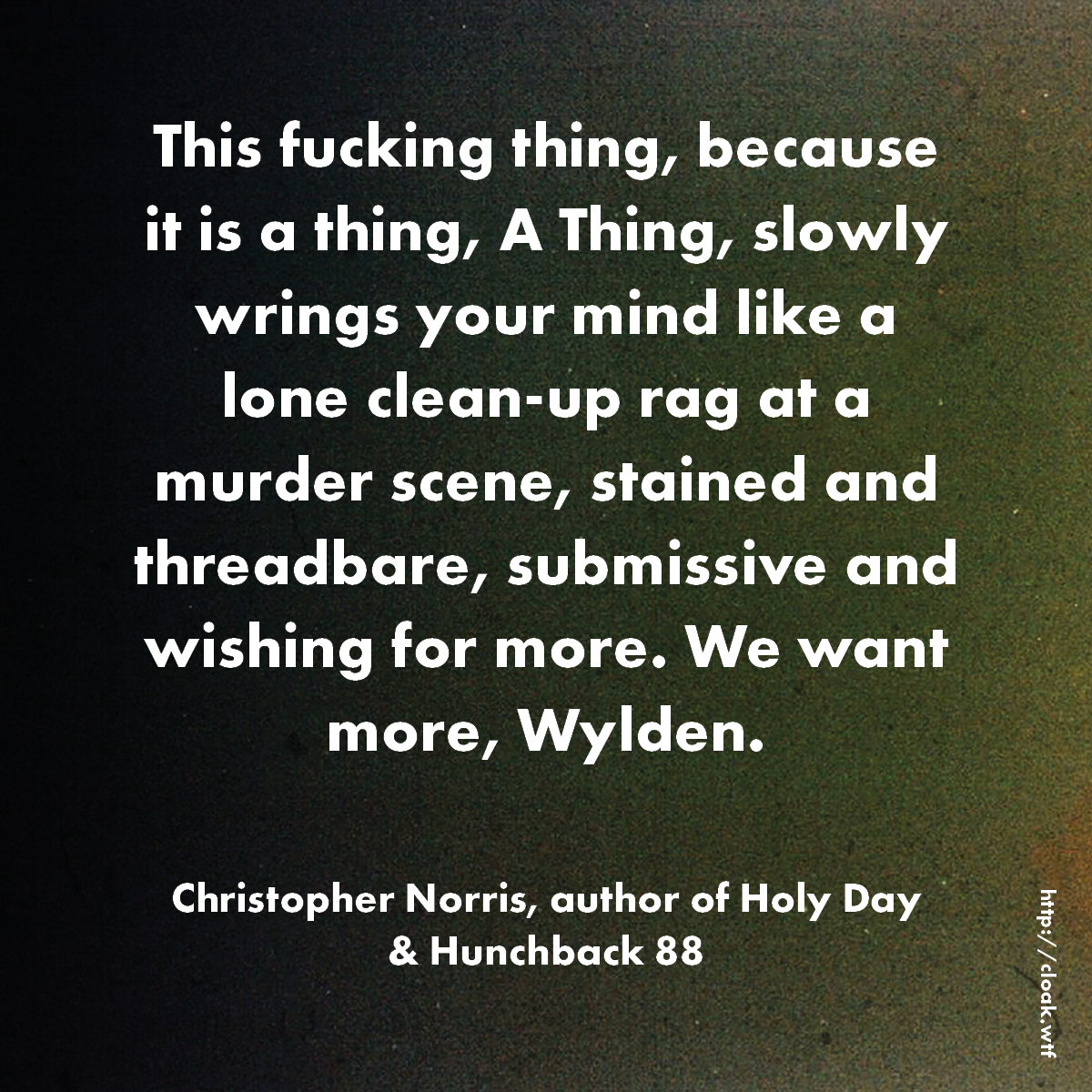
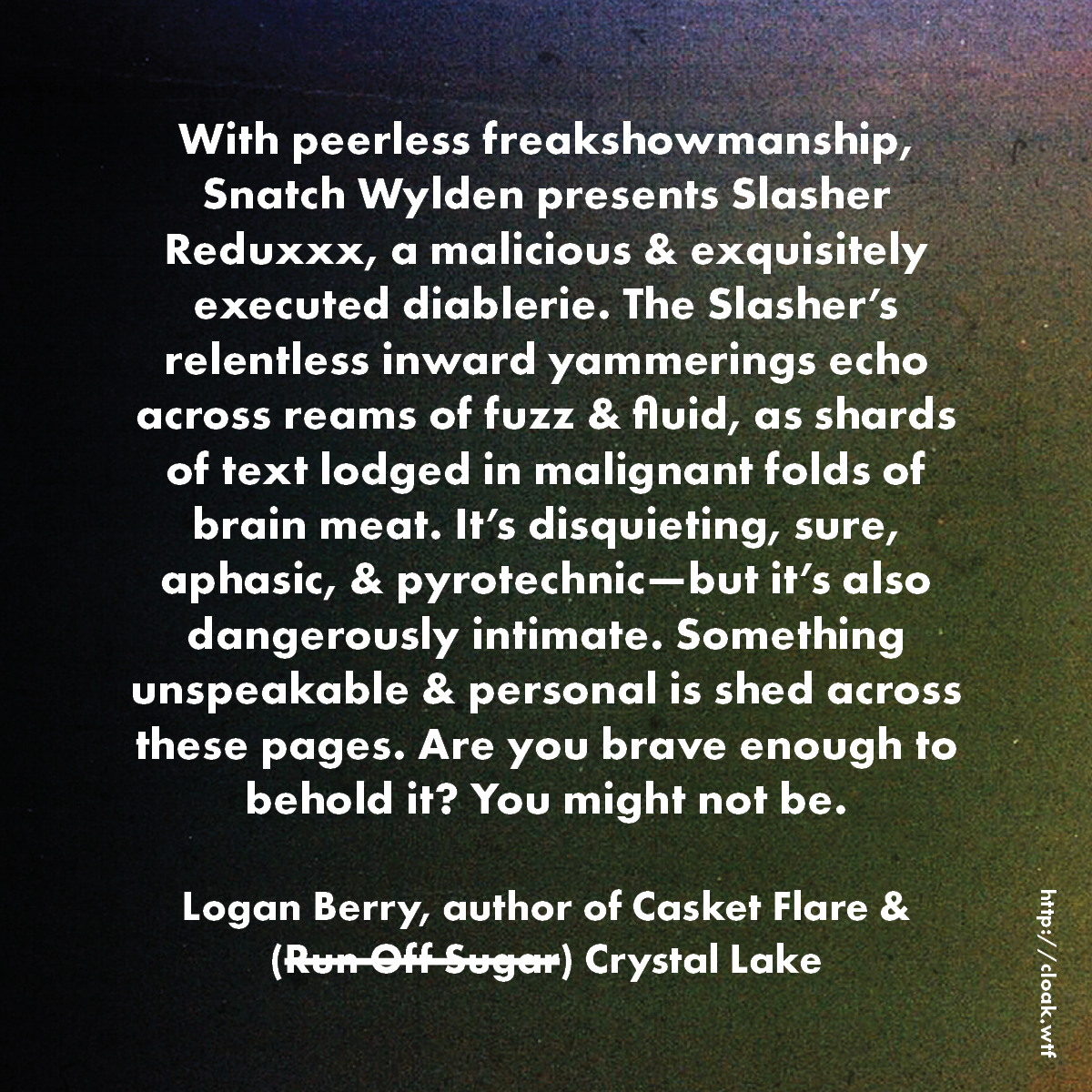
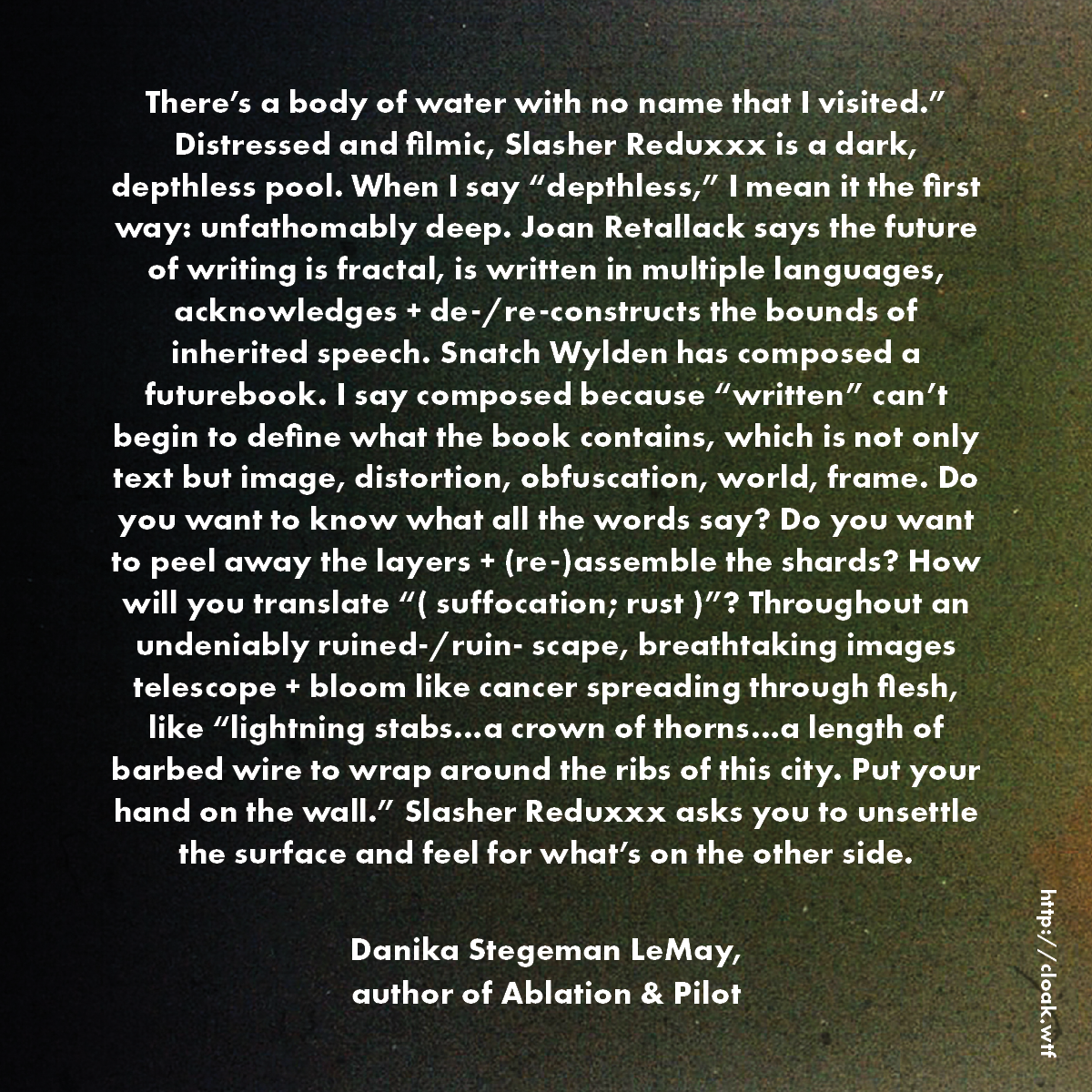
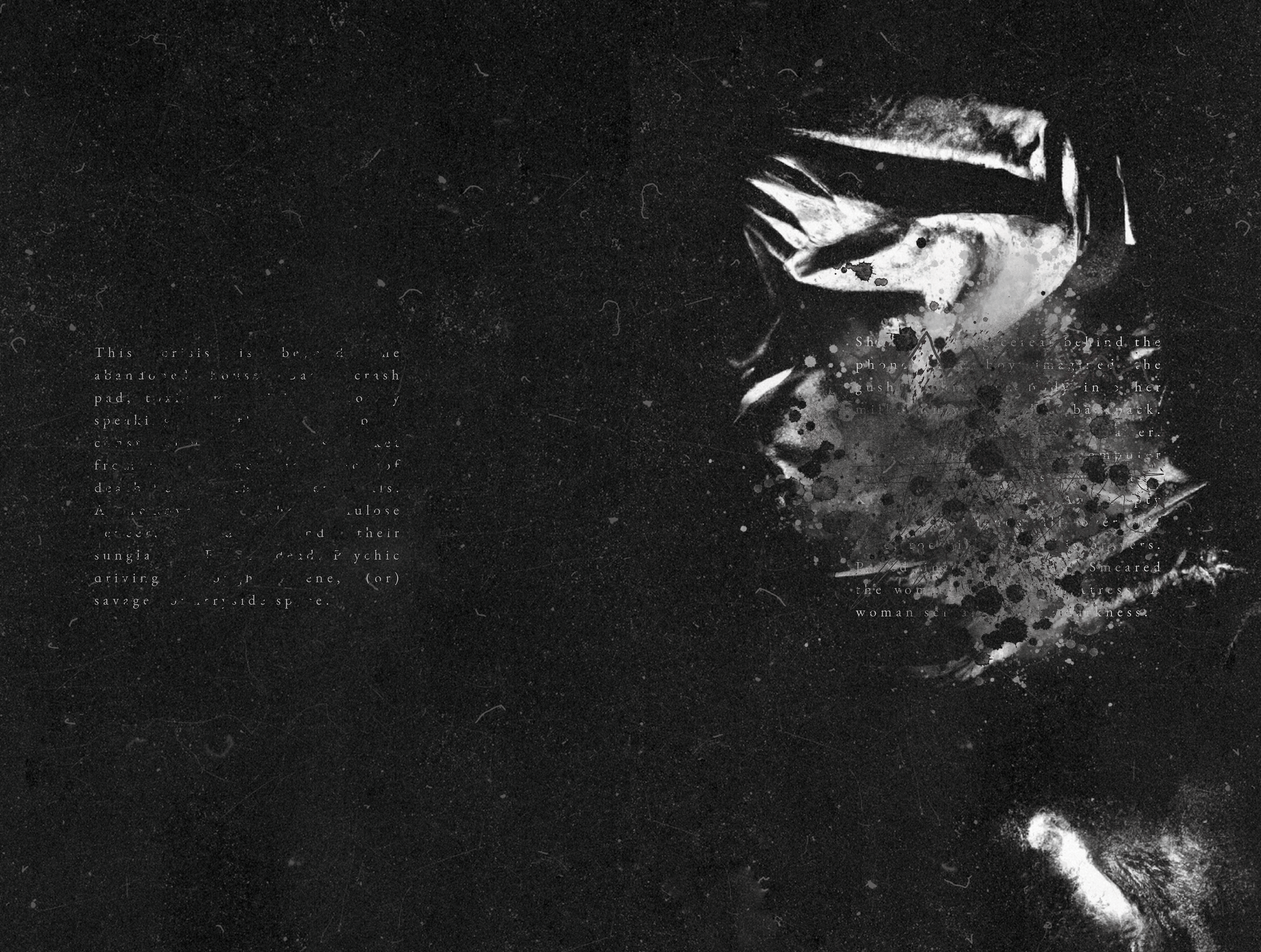
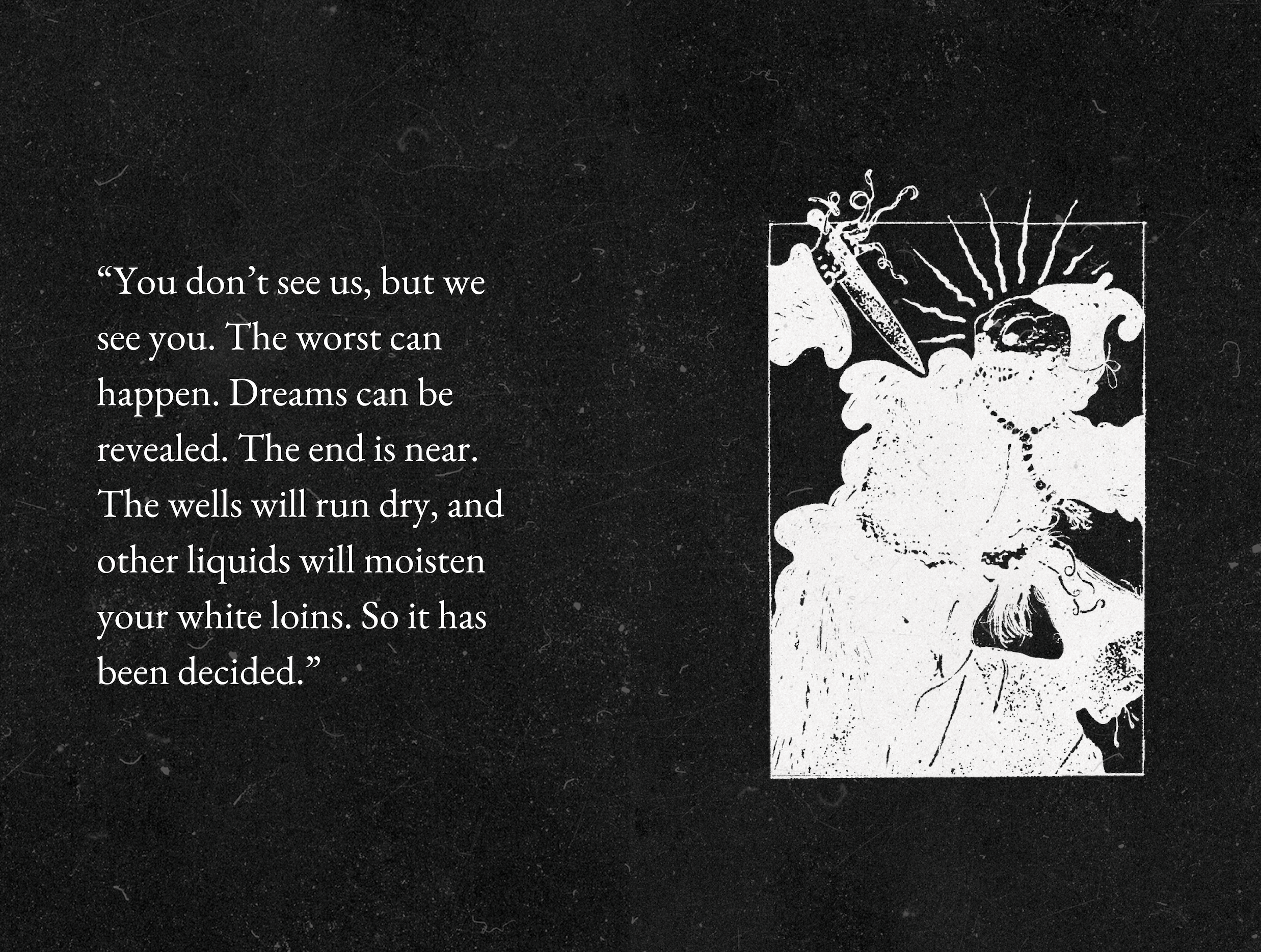
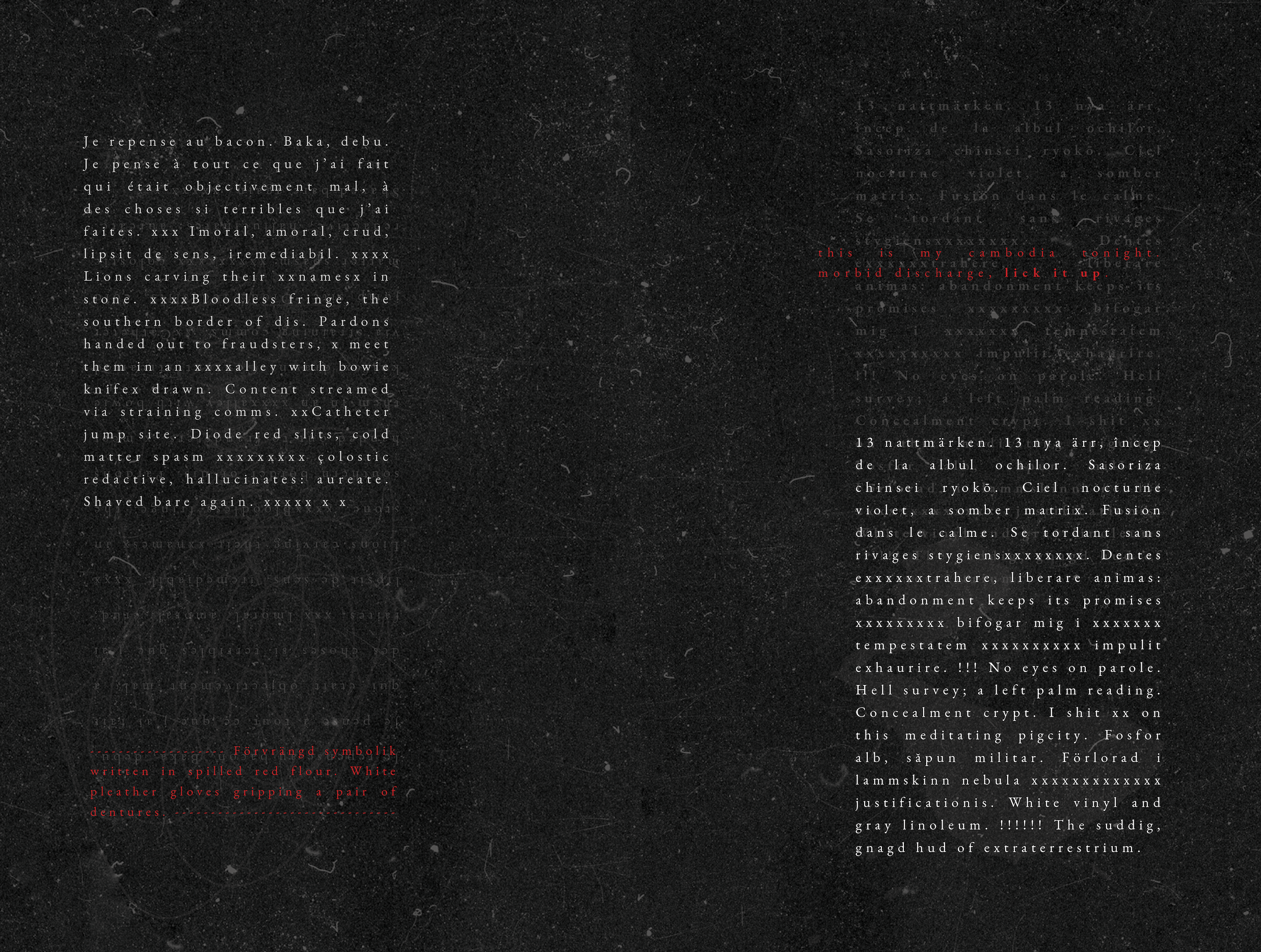
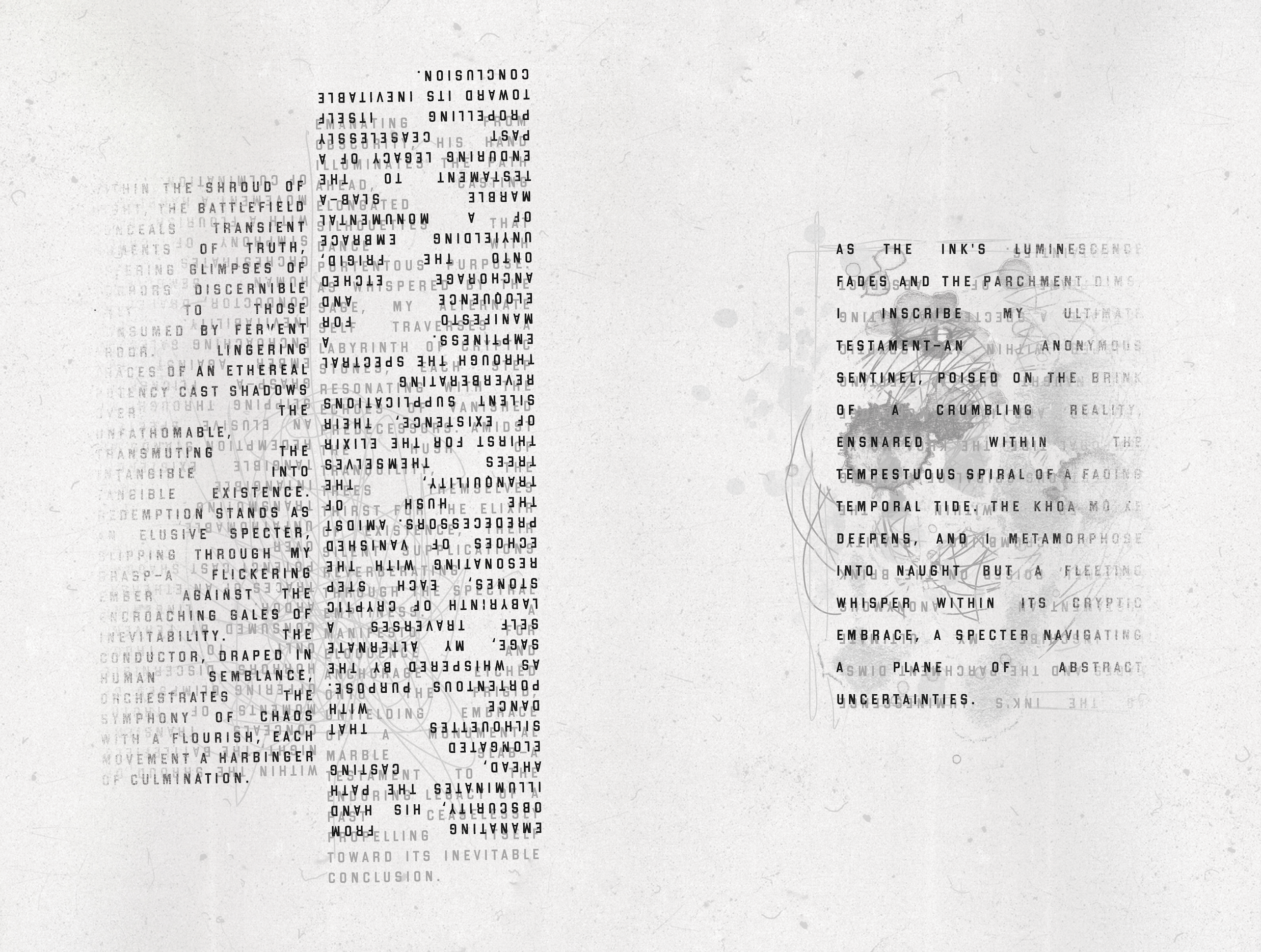




 Now available in North America
Now available in North America 